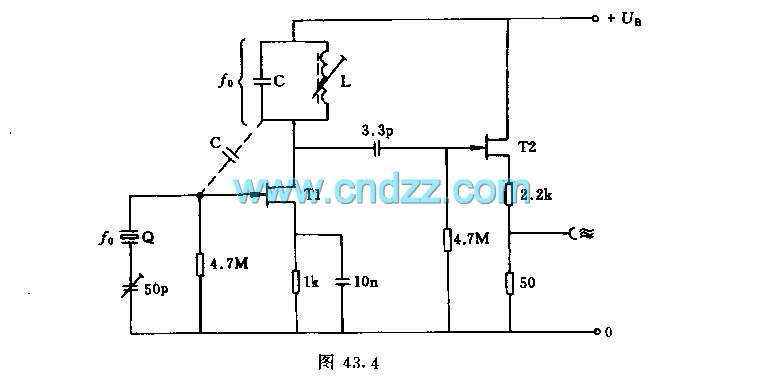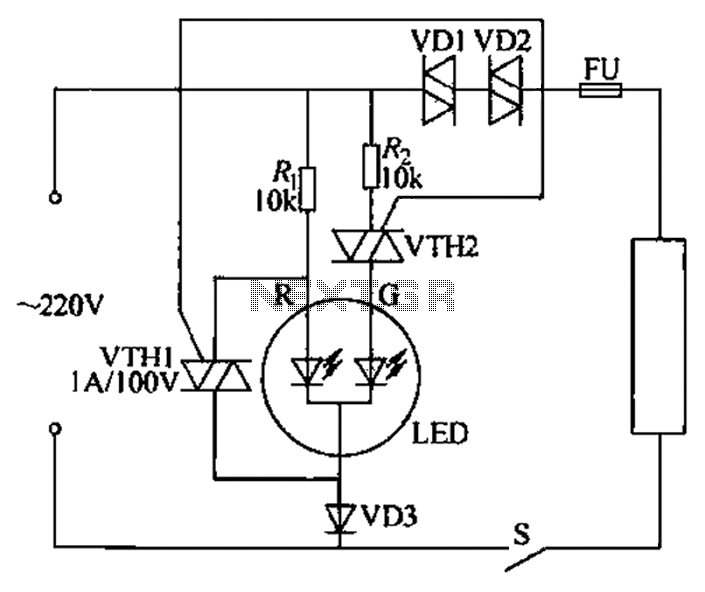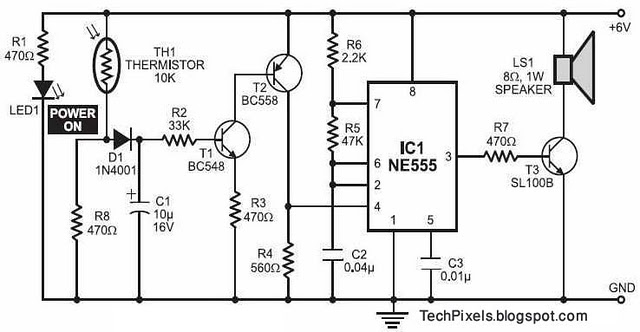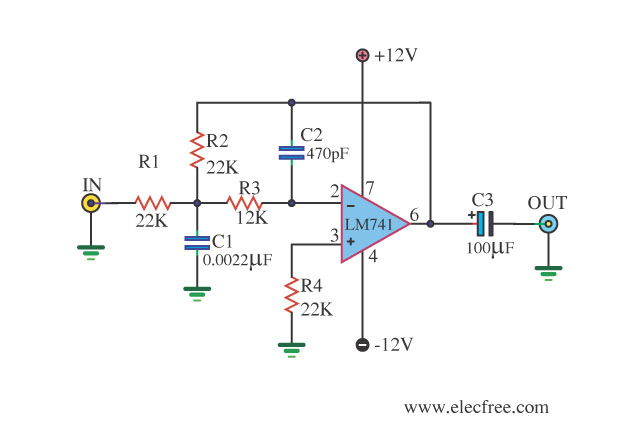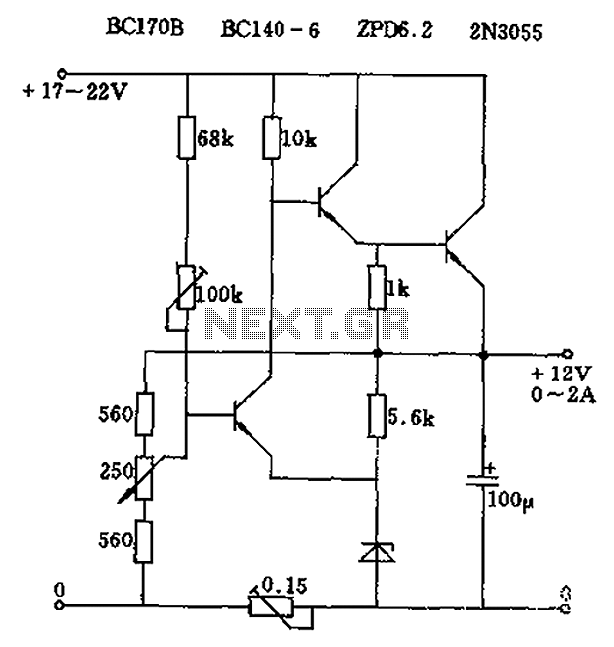
Two-wire RTD connection circuit diagram XTR108
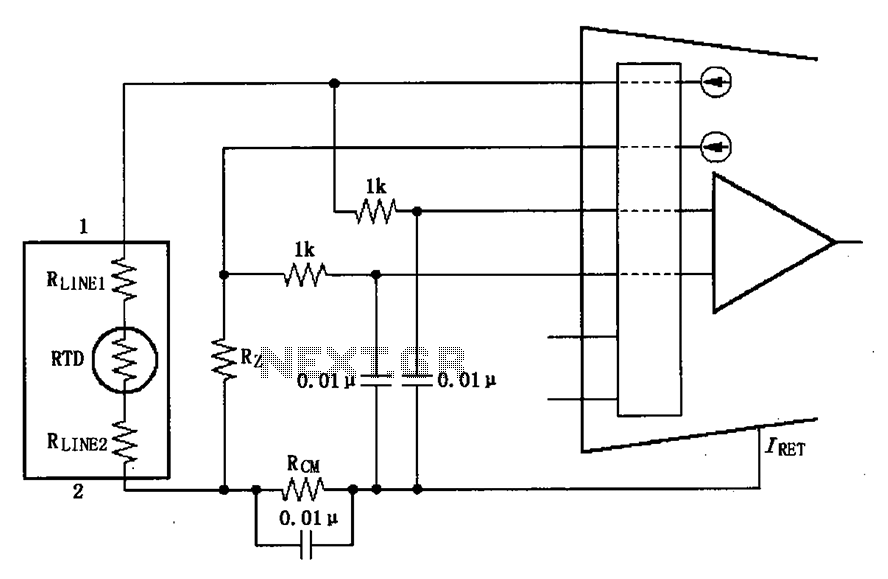
The long wire current loop transmission is susceptible to radio frequency (RF) interference, which can lead to errors in the sensitive input of the XTR108. This interference can occur particularly when the RTD sensor is located at a distance, as it introduces noise at the XTR108 input. Additionally, if the transmitter and sensor are connected by short connections, the current loop cable can introduce even more interference. To mitigate this issue, a 0.01 µF bypass capacitor filter should be applied at the input to reduce or eliminate interference. It is essential to connect the common points with the IRET end of the bypass capacitor. Although the IRET end of the DC voltage is not zero, it serves as the ground for the transmitter. Furthermore, a 0.01 µF capacitor should be connected to the VLOOP at the Io indirect end to further minimize interference.
The described circuit addresses the challenges posed by RF interference in current loop transmission systems, particularly when using the XTR108 for sensor applications. The XTR108 is a precision current transmitter, often used in applications involving resistance temperature detectors (RTDs). Given its sensitivity, any RF noise can significantly affect its performance and accuracy.
In this setup, the 0.01 µF bypass capacitor acts as a high-frequency filter, effectively shunting unwanted RF energy to ground, thereby protecting the input stage of the XTR108. The placement of this capacitor is critical; it should be connected as close as possible to the input terminals of the XTR108 to ensure maximum effectiveness. The IRET point, which is typically the return path for the current loop, must be carefully considered, as it is not at ground potential but serves as the reference for the transmitter.
Additionally, the use of another 0.01 µF capacitor at the VLOOP connection helps to stabilize the output signal by filtering out high-frequency noise that may couple into the loop. This capacitor should also be positioned close to the output terminal to minimize inductive effects that could degrade the performance.
Overall, this configuration enhances the reliability of the XTR108 in noisy environments by ensuring that both the input and output stages are adequately filtered against RF interference, thus preserving the integrity of the signal transmitted from the sensor. Proper attention to component placement and values is crucial for achieving optimal performance in industrial and sensitive measurement applications. As shown, the long wire current loop transmission will be introduced radio frequency (RF) interference, RF energy can cause sensitive XTR108 input errors, performance in an uns table loop current or input line current. If the RTD sensor in the distance, in the XTR108 input will introduce interference. If the transmitter and sensor short connections, the more interference from the current loop cable. The solution is applied at the input 0.01 F bypass capacitor filter, to reduce or eliminate the interference. Connect these common points with IRET end of the bypass capacitor, although IRET ends of the DC voltage is not zero, but it is the transmitter of ground.
In addition, VLOOP with a 0.01 F capacitor Io indirect end, the output will help to minimize interference.
The described circuit addresses the challenges posed by RF interference in current loop transmission systems, particularly when using the XTR108 for sensor applications. The XTR108 is a precision current transmitter, often used in applications involving resistance temperature detectors (RTDs). Given its sensitivity, any RF noise can significantly affect its performance and accuracy.
In this setup, the 0.01 µF bypass capacitor acts as a high-frequency filter, effectively shunting unwanted RF energy to ground, thereby protecting the input stage of the XTR108. The placement of this capacitor is critical; it should be connected as close as possible to the input terminals of the XTR108 to ensure maximum effectiveness. The IRET point, which is typically the return path for the current loop, must be carefully considered, as it is not at ground potential but serves as the reference for the transmitter.
Additionally, the use of another 0.01 µF capacitor at the VLOOP connection helps to stabilize the output signal by filtering out high-frequency noise that may couple into the loop. This capacitor should also be positioned close to the output terminal to minimize inductive effects that could degrade the performance.
Overall, this configuration enhances the reliability of the XTR108 in noisy environments by ensuring that both the input and output stages are adequately filtered against RF interference, thus preserving the integrity of the signal transmitted from the sensor. Proper attention to component placement and values is crucial for achieving optimal performance in industrial and sensitive measurement applications. As shown, the long wire current loop transmission will be introduced radio frequency (RF) interference, RF energy can cause sensitive XTR108 input errors, performance in an uns table loop current or input line current. If the RTD sensor in the distance, in the XTR108 input will introduce interference. If the transmitter and sensor short connections, the more interference from the current loop cable. The solution is applied at the input 0.01 F bypass capacitor filter, to reduce or eliminate the interference. Connect these common points with IRET end of the bypass capacitor, although IRET ends of the DC voltage is not zero, but it is the transmitter of ground.
In addition, VLOOP with a 0.01 F capacitor Io indirect end, the output will help to minimize interference.
